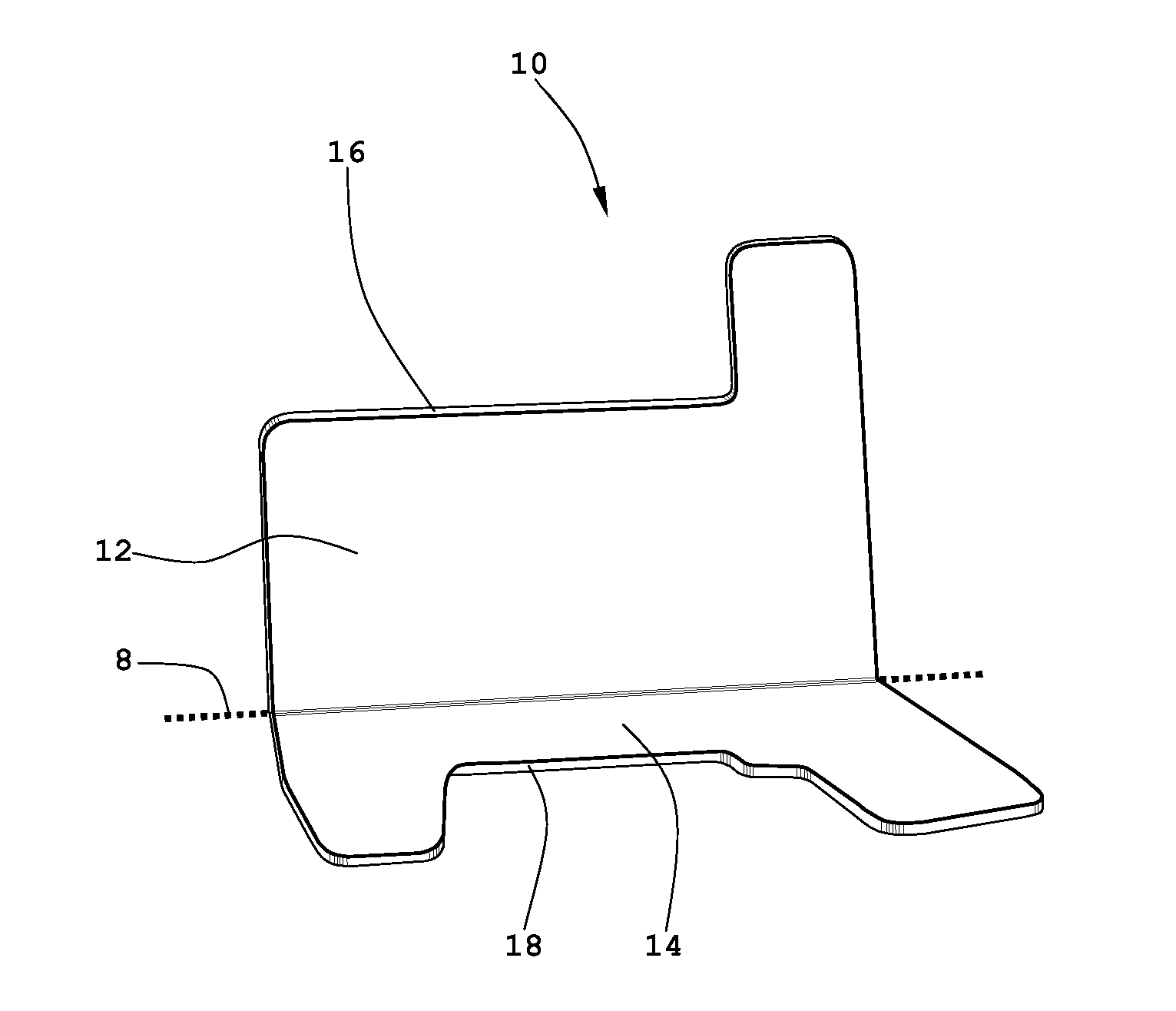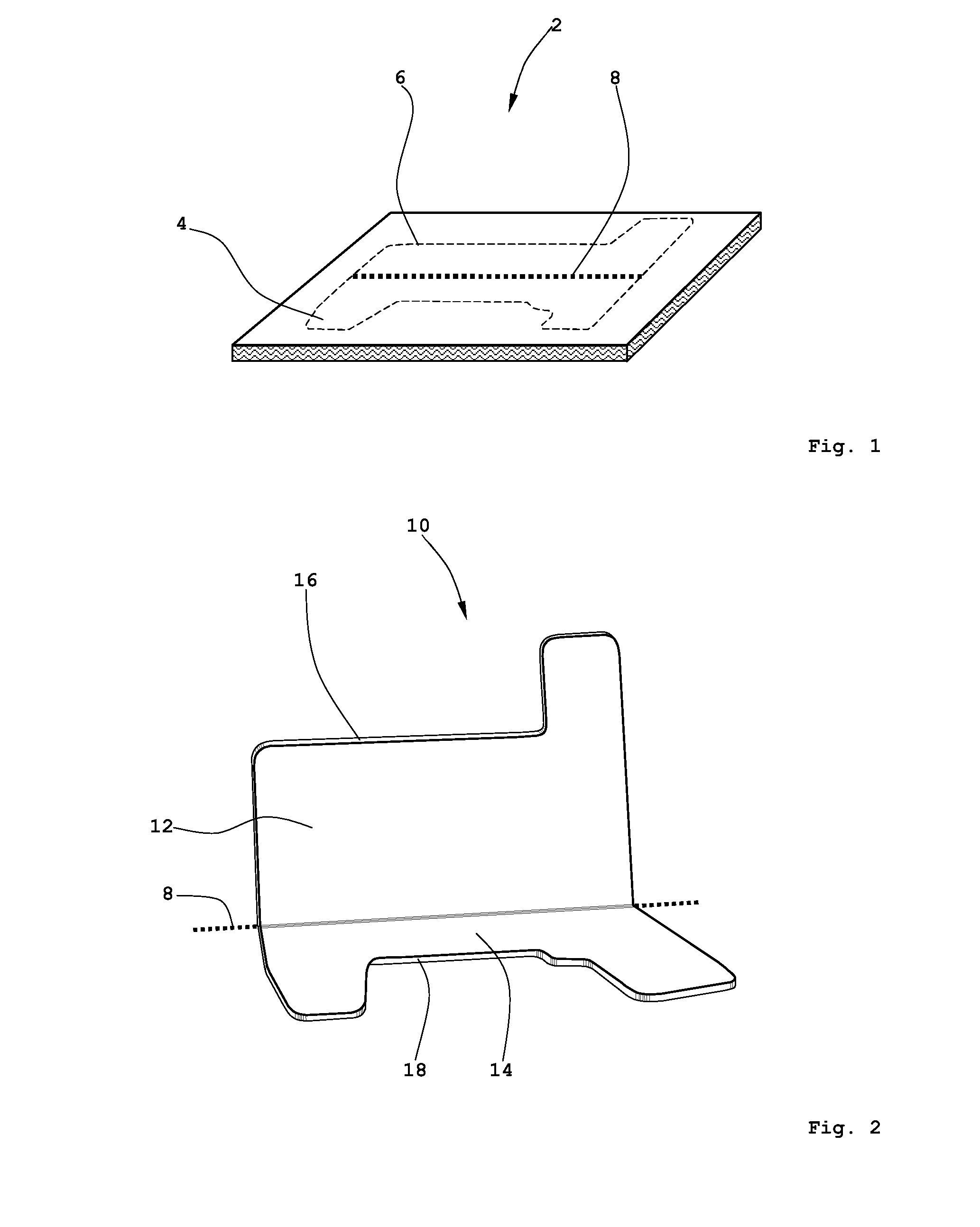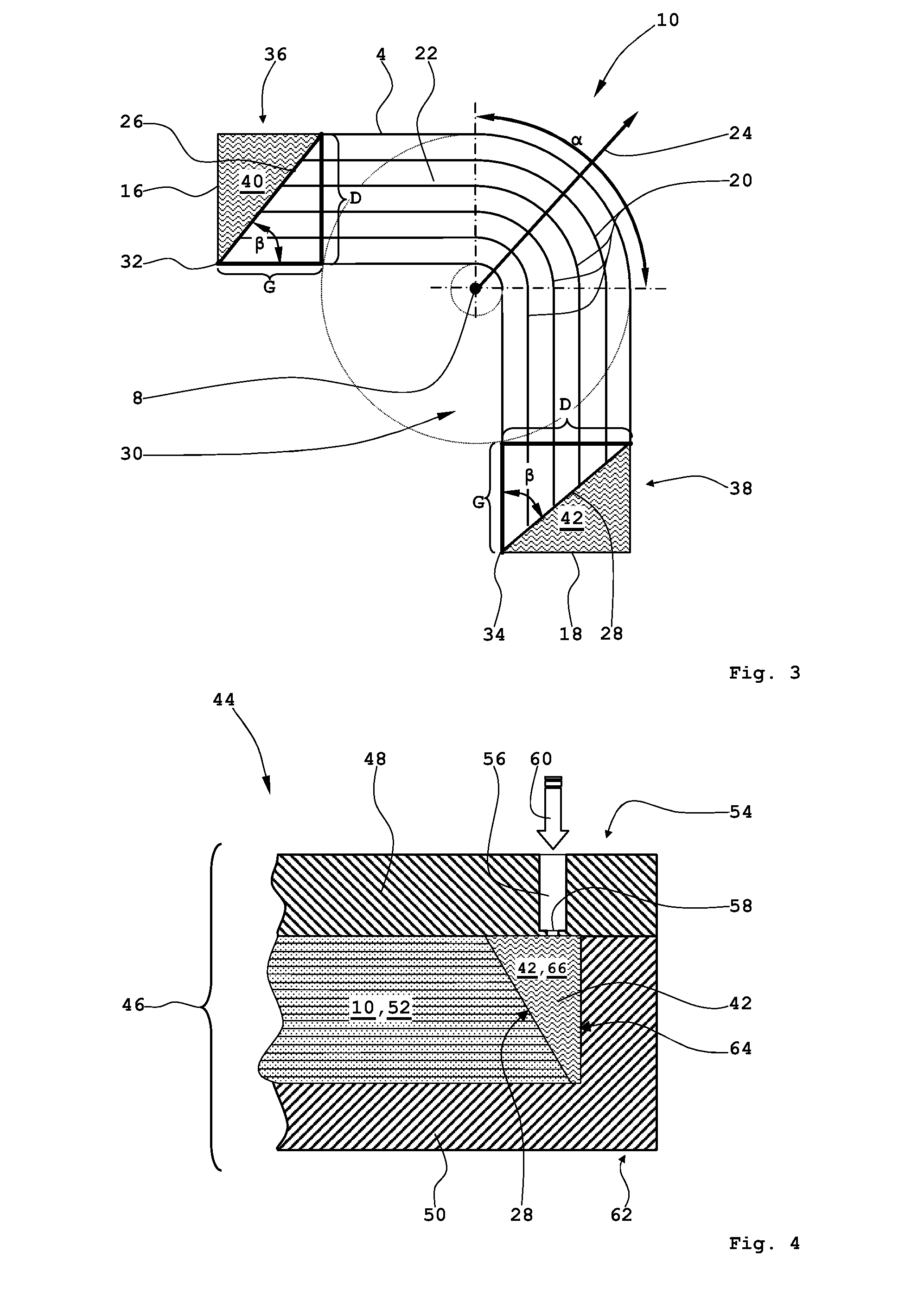Method for the manufacture of a fiber-reinforced component, device for implementing the method, and fiber-reinforced component
a fiber-reinforced component and manufacturing method technology, applied in the direction of turning machine accessories, drawing profiling tools, domestic articles, etc., can solve the problems of increased labor intensity, increased cost, and difficulty in processing fiber-reinforced duroplastic plastics, and achieve the effect of simple and easy automation
- Summary
- Abstract
- Description
- Claims
- Application Information
AI Technical Summary
Benefits of technology
Problems solved by technology
Method used
Image
Examples
Embodiment Construction
[0041]FIG. 1 shows a plate-shaped semifinished product that preferably comprises a carbon fiber-reinforced thermoplastic plastic material.
[0042]A likewise plate-shaped semifinished product 2 comprises a thermoplastic matrix in which reinforcement fibers, for example carbon fibers, are embedded. The thermoplastic matrix can, for example, comprise a polyphenylenesulfide (PPS) polyetheretherketone (PEEK), polyetherimide (PEI) polyetherketoneketone (PEKK) or polyethylenenterephthalate (PET) or some other high-performance plastics. In order to exclude any surface corrosion effects, apart from possible contact corrosion in the component edge region, also in the region of the top and bottom (not shown with reference characters) of the formed component, in each case below the top or below the bottom layers of reinforcement fibers, which comprise glass fibers, can be embedded in the thermoplastic matrix of the semifinished product 2 as the last or final layers.
[0043]From a middle region (not...
PUM
| Property | Measurement | Unit |
|---|---|---|
| Pressure | aaaaa | aaaaa |
| Angle | aaaaa | aaaaa |
| Shape | aaaaa | aaaaa |
Abstract
Description
Claims
Application Information
 Login to View More
Login to View More - R&D
- Intellectual Property
- Life Sciences
- Materials
- Tech Scout
- Unparalleled Data Quality
- Higher Quality Content
- 60% Fewer Hallucinations
Browse by: Latest US Patents, China's latest patents, Technical Efficacy Thesaurus, Application Domain, Technology Topic, Popular Technical Reports.
© 2025 PatSnap. All rights reserved.Legal|Privacy policy|Modern Slavery Act Transparency Statement|Sitemap|About US| Contact US: help@patsnap.com



